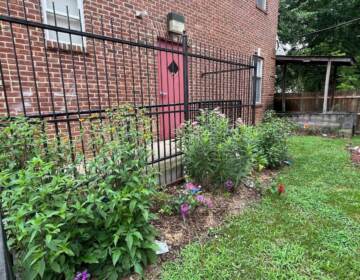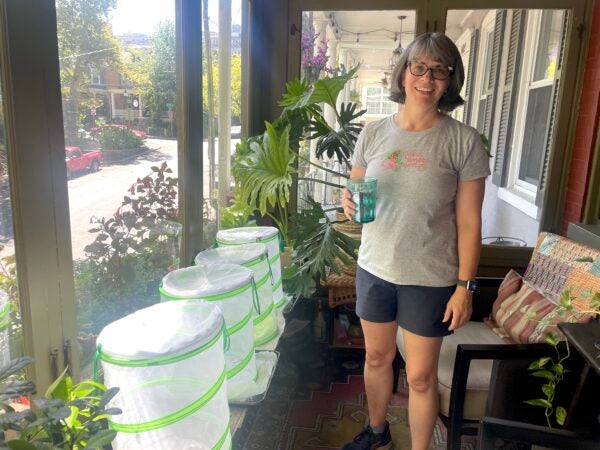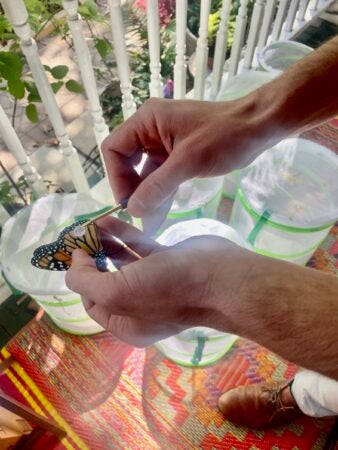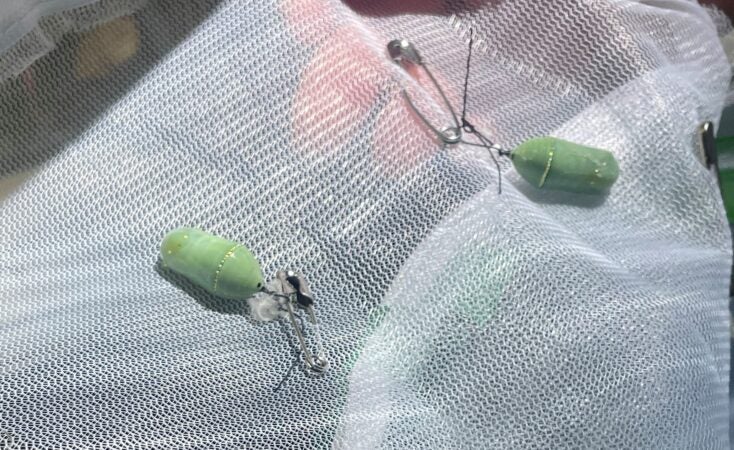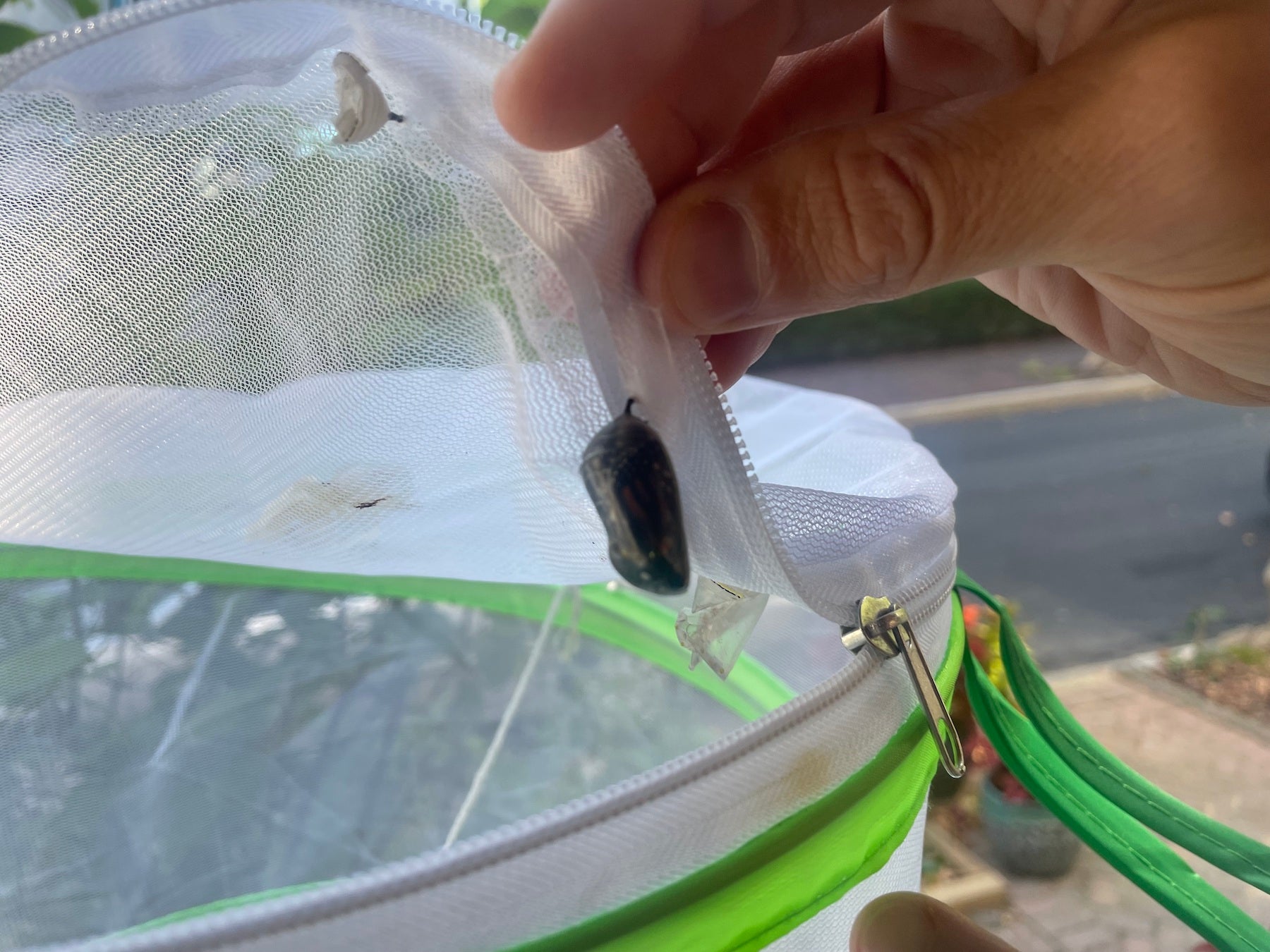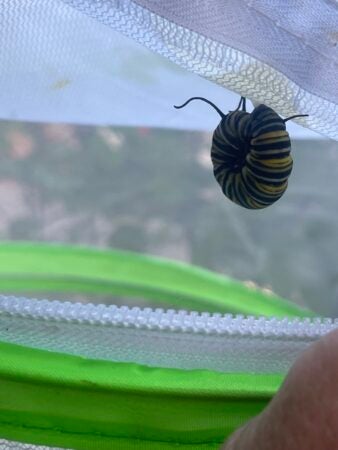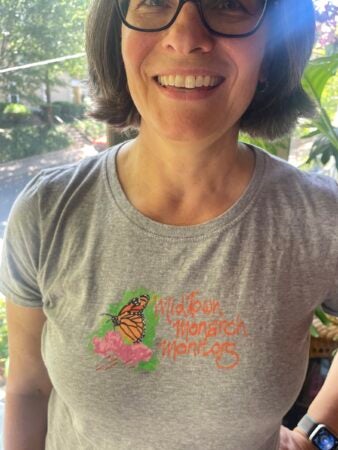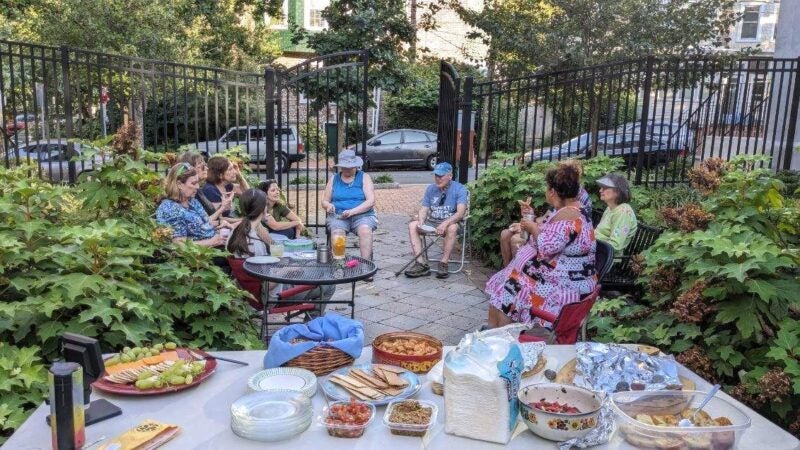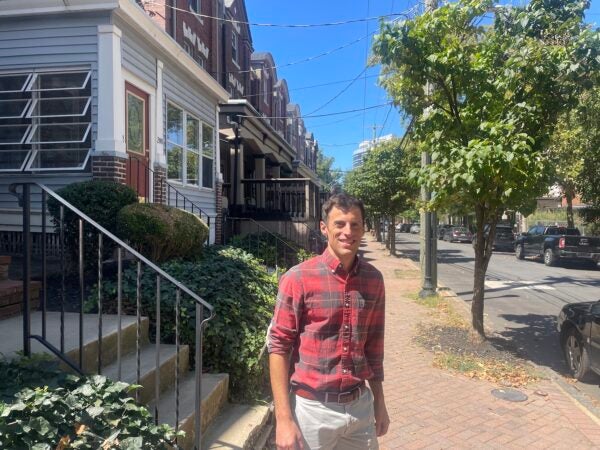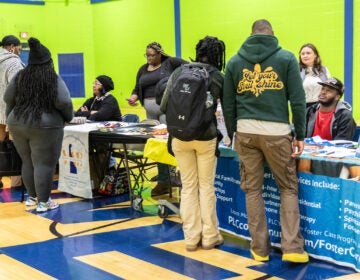For Wilmington neighbors, raising an endangered species is a ‘saving us’ project
Jason Hoover sought to unite his enclave around the stunning creature. “Now we have this huge group of people that meet and geek out about butterflies.”
Listen 4:07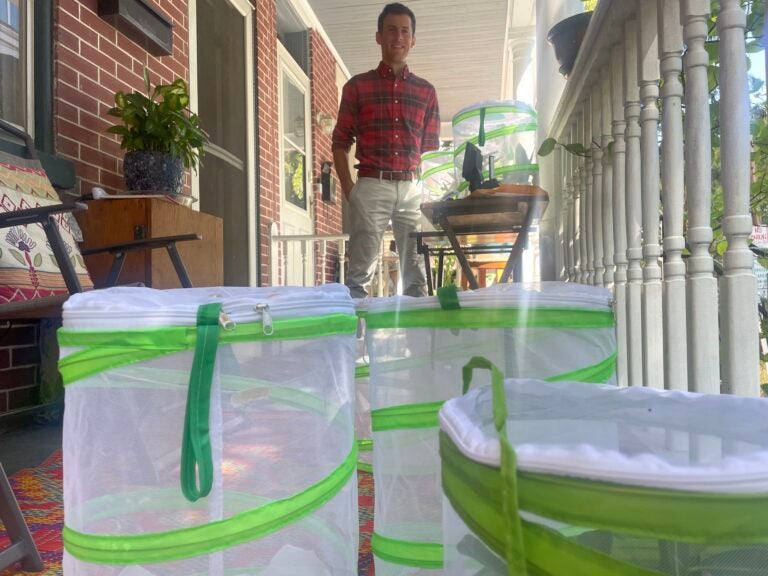
Jason Hoover's porch is lined with mesh cages for monarchs. (Cris Barrish/WHYY)
“Oh Mike, look! Your butterfly just emerged,” Jason Hoover calls to Mike Yingling across their connected porches in Wilmington’s Midtown Brandywine neighborhood.
“No way. Look at the little guy,’’ Yingling gushes after peering inside a white mesh cage with green trim. The enclosure holds one of the fluttering prizes that’s been uniting residents in the enclave of about 100 rowhouses on the outskirts of downtown.
Yingling is admiring a monarch butterfly that in the last hour had spilled out of its pupal case — the nearly monthlong process from egg to caterpillar to chrysalis to emergence at last completed.
The stunning winged creature — which emerges from the pupal case as orange, yellow, black, and white — is one of about 150 that have been incubating at some 15 homes in Midtown Brandywine since June.
Hoover, a web developer who became captivated by the monarch a few years ago, notes the butterfly’s “intrinsic beauty’’ and role as a wildflower pollinator in the natural ecosystem.
The monarch, which has an annual breeding pilgrimage from Mexico to Canada and back to sustain its existence, has experienced a dramatic population drop in the last quarter century. In July 2022, the International Union for the Conservation of Nature designated the monarch as an endangered species.
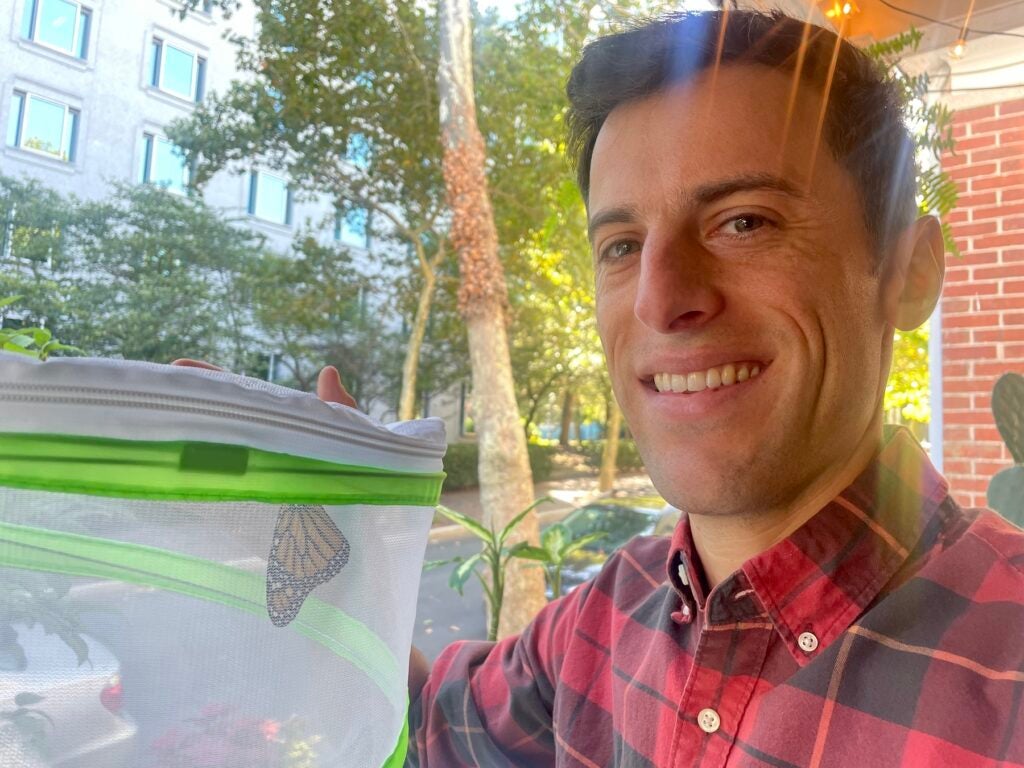
While Hoover certainly wants the species to survive and thrive, he created the community group more in the spirit of neighborly togetherness.
“This is not an effort to save the monarchs,’’ Hoover explains. “The work that we’re doing is helping to bolster their population a little bit. But that’s not the purpose of it. And that can only go so far.”
“Really, this is sort of a monarch saving us situation. They’re creating a reason for us to build community around. There’s a group of about 20 neighbors that all know each other now who didn’t know each other before. We have something in common. We have common goals. We share our love and our curiosity of these incredible little creatures. And it’s just built this really cool dynamic that didn’t exist before.”
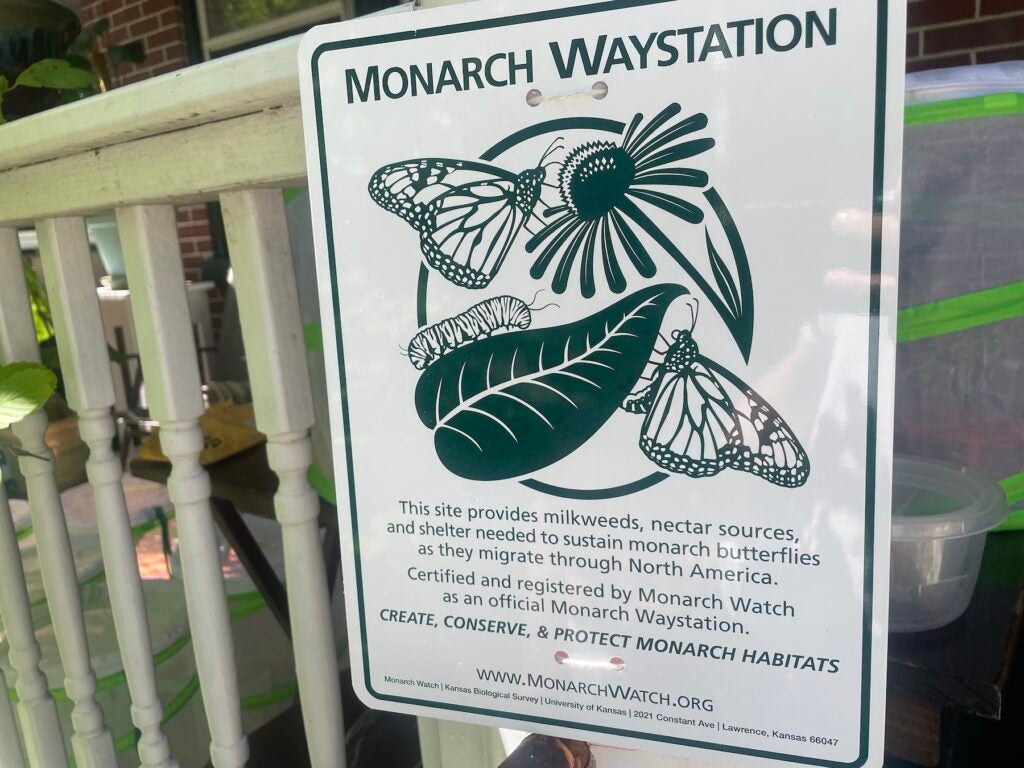
Yingling, who works for a security systems firm, concurs.
“There’s a lot of exposure to each other because everybody wants to participate,’’ he said.
The neighbors grow milkweed — the only plant the caterpillars eat — at home and in a small park in the neighborhood. Hoover distributes seed packets and monarch eggs, and provides advice on nurturing the creatures through the life cycle.
They put tags on the new butterfly’s wings to help other monarch enthusiasts document their migration pattern. They hold release parties that double as a bonding happy hour. One member created T-shirts emblazoned with the phrase Midtown Monarch Monitors.
“And now we have this huge group of people that meet and geek out about butterflies and we actually have a lot in common,’’ Hoover says. “It’s really cool.”
Jason Hoover of Wilmington’s Midtown Monarch Monitors tags a newly emerged butterfly. @VisitWilmington @Monarchbutterf9 pic.twitter.com/954ZSJlemM
— Cris Barrish (@BarrishCris) September 5, 2023
Ward Johnson, who runs the Minneapolis-based Save Our Monarchs Foundation, said the Wilmington group joins thousands that already exist around the nation. His nonprofit offers free packets of milkweed seeds to anyone who requests them.
“I like what they’re doing,’’ Johnson said. “I like every organization that gets together and develops local programs to help the monarchs.”
“We are looking for people to evangelize what we are doing. And we want these evangelists to go out and try to solicit schools, solicit colleges, solicit Boy Scout troops, solicit religious communities, and try to convince them to grow milkweed seeds.”
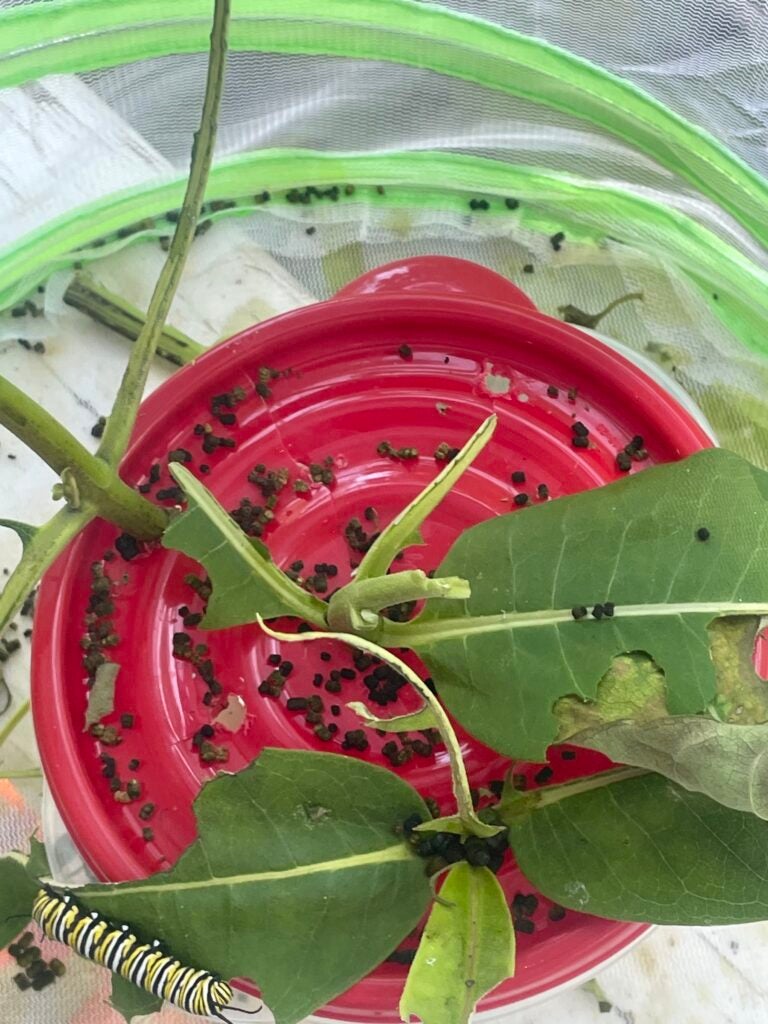
‘We celebrate each other as the butterflies are being released’
On a recent walk around tree-lined Midtown Brandywine, Hoover pointed out homes that now have the mesh cages on their porches.
Jessica Reed has four cages on her enclosed porch, including one with a half-dozen chrysalises in various stages of development. They begin as lime green in color with a gold trim, but the outer membrane gradually becomes transparent, and just before the butterfly emerges, its orange and black coloring is clearly visible.
Reed, a strength coach for senior citizens whose favorite hobby is cultivating native plants, is wearing her Midtown Monarch Monitors shirt. She admits she was lukewarm to the monarch movement at first. “I thought it was a fine idea. I was like, ‘Cool, do that.’ But then I started raising the monarchs. I raised four. It went so well that now I’m raising 20 more.”
Fear of missing out also fueled her interest; she felt a tinge of jealousy after seeing neighbors’ social media posts about their caterpillars, chrysalises, and butterflies. She recalled one neighbor raving about the “profound experience’’ of raising the creatures.
Now Reed is hooked.
“It just shows you how the environment is interrelated and that the plants that don’t seem to have a purpose really do,” Reed said. “No one grows milkweed for food and no one grows milkweed really in their gardens. It’s not the most beautiful plant, but it helps you understand that a native plant has a purpose and that everything fits into that puzzle.”
Two blocks away, Irene Vogel is waiting.
She’s a University of Delaware linguistics professor with a focus on endangered languages. But as she eases into retirement Vogel has a new interest: the endangered monarch.
She credits Hoover for piquing her curiosity.
“It’s not that I would have gone looking for the caterpillars or the butterflies myself,’’ she said. “I knew nothing about them except that they were endangered pretty much, and that they went down to Mexico.”
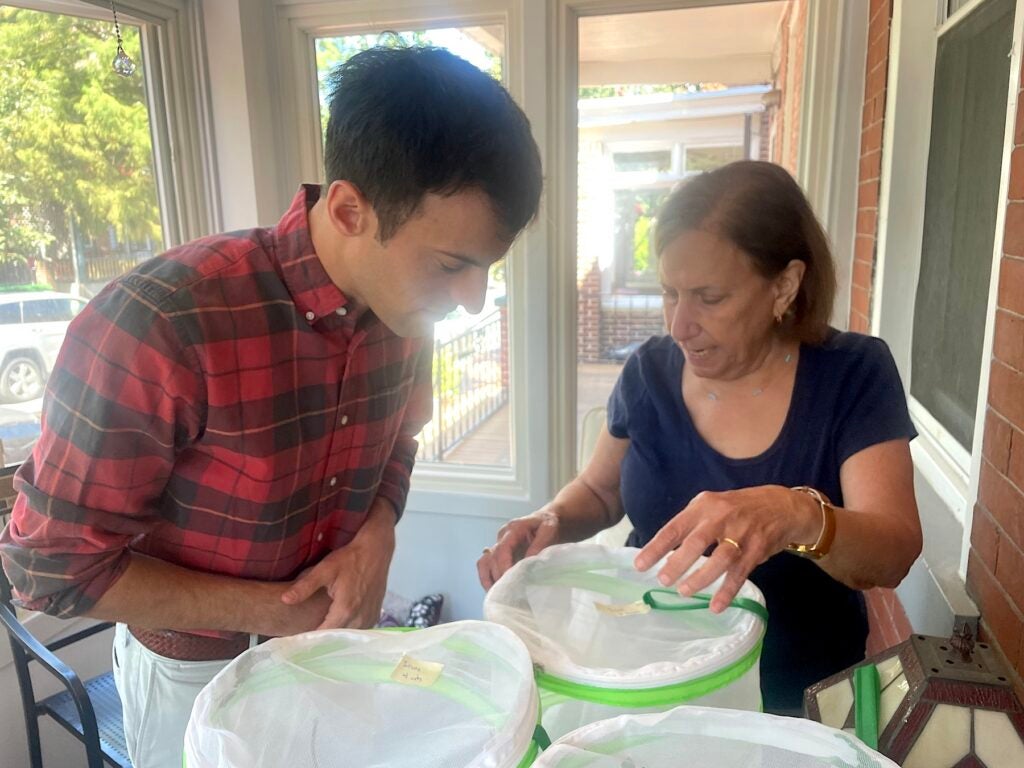
But like other neighbors, Vogel is now a devotee, and has a trio of cages.
“It’s been wonderful. It’s made my summer,” Vogel said. “Really. I have enjoyed every aspect of it. I’ve enjoyed learning all kinds of new stuff. I’ve enjoyed the whole community aspect of it. I’ve enjoyed learning also about how they interact with our plants. I’m not particularly knowledgeable about plants, but now I’m learning about that as well.”
She’s also found more friends.
“I have met some people that I didn’t even know, and I have really enjoyed sharing things with people that I wouldn’t have anything in common with,’’ Vogel said. “So we have the butterflies in common, and we help each other out. We celebrate each other’s butterflies being released.”
“I think it’s really been a great thing for the neighborhood. And I do think that going forward, it’s going to bring more people together.”
Cognizant that all the group’s members are white, Vogel says she and others want it to reflect the racially and ethnically diverse population of Midtown Brandywine. She also envisions getting the neighborhood’s Freire Charter School of Wilmington, where almost all the students are Black or Latino, involved.
“I feel like this summer was just an experiment just to see if we could do it, how it would work,’’ the professor said. “And we’re going to make plans for next summer to do it better in a sense. And that would be involving more people.”
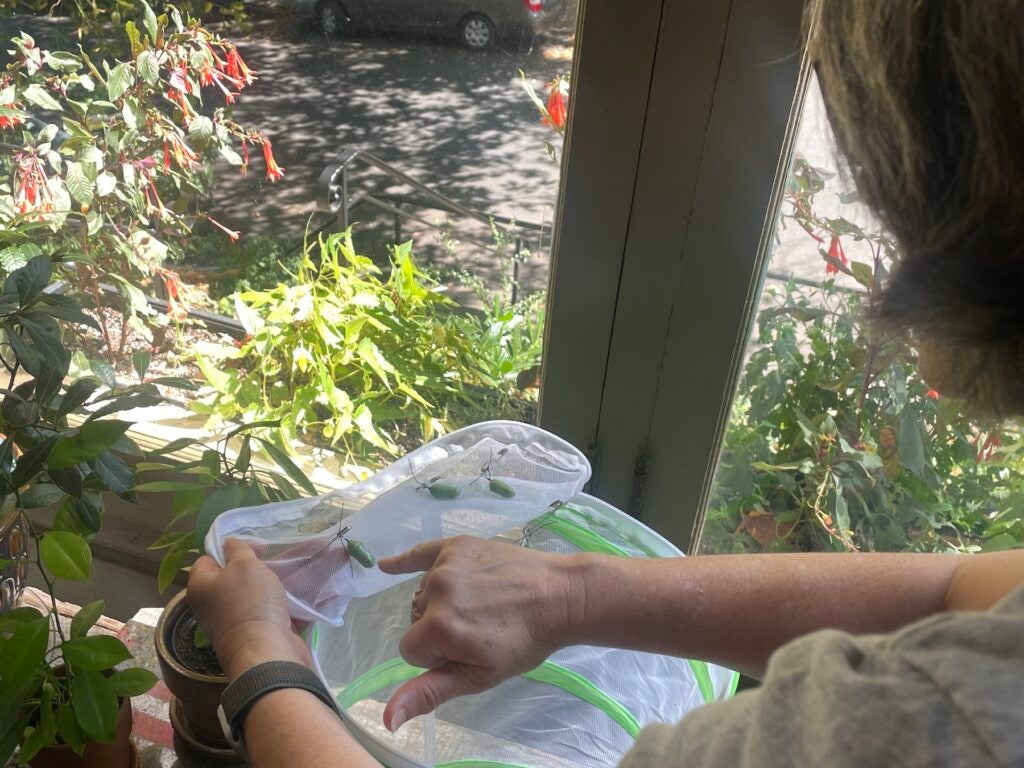
Hoover agrees.
“I hope that this project keeps continuing and that more and more people try to get their feet wet and witness this incredible transformation,” he said. “But really, my biggest thing is to build community and to develop or foster a curiosity for the world around you.”

Get daily updates from WHYY News!
WHYY is your source for fact-based, in-depth journalism and information. As a nonprofit organization, we rely on financial support from readers like you. Please give today.



